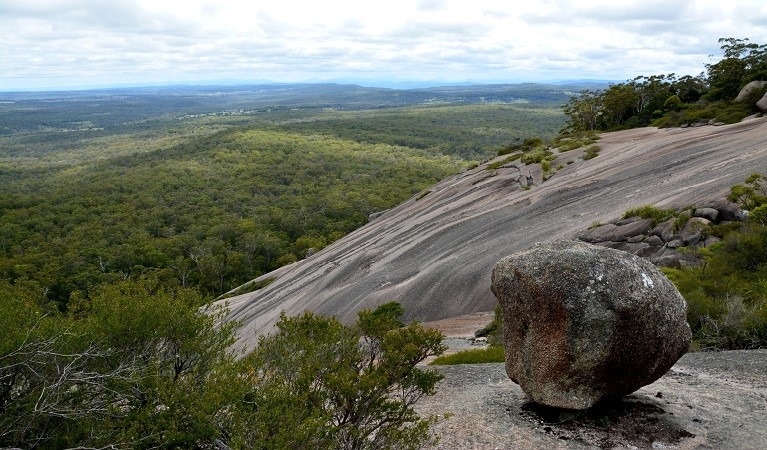Rapid Fauna Assessment Project

Project Overview
Bald Rock National Park encompassed an area of 8,046 hectares and is located 29 km north-east of Tenterfield. To the west the Park borders Girraween National Park in Queensland (11,399 hectares) and adjoins private grazing lands in the south and north east. Both Parks are of regional conservation significance as they provide protection for the most diverse range of plant and animal communities found in the granite belt. The Rapid Fauna Assessment (RFA) technique has been designed as an effective and rapid means of; a) undertaking a species census, 2) identifying significant species and 3) determining the fauna conservation values and associated management considerations. Subsequently, an RFA was required to be undertaken within Bald Rock National Park to assist with the implementation of Bald Rock and Boonoo Boonoo Management Plan.
Our Role
Ecobalance was engaged by NSW Parks and Wildlife to:
- Undertake a species census and identify significant species within Bald Rock National Park. This action has been derived from NP&WS Strategic 2011-2012 Regional Operation Plan, ‘Goal 1, Native Vegetation, biodiversity and land – Survey -Obtain a copy of Rapid Assessment Fauna Survey Report’,
- Utilise standard, targeted and opportunistic fauna survey methods, within four distinct vegetation communities,
- Develop a species census and enter this data into NSW Wildlife Atlas,
- Identify significant fauna conservation values and associated management considerations.
Outcomes
The main conservation values identified from undertaking the RFA are summarised as follows:
- Significant fauna habitat for three species listed under the NSW Threatened Species Conservation Act 1995 (TSC Act) and one species listed under the Commonwealth’s Environmental Biodiversity and Protection Act 1999 (EBPC Act). Species include populations of regionally Endangered (EBPC Act) Glossy Black Cockatoos (Calyptorhynchus lathami), the Vulnerable (TSC Act) Scarlet Robin (Petroica boodang), the Vulnerable (TSC Act) Masked Owl (Novaehollandiae castanops) and the Endangered (TSC Act) Spotted Tailed Quoll (Dasyurus maculatus),
- Relatively large number of hollow bearing trees that are utilised by at least two species of arboreal fauna including Greater Gliders (Petauroides volans) and Sugar Gliders (Petaurus breviceps),
- Widespread use of eucalypt forest as habitat for Yellow Footed Antechinus (Antechinus flavipes), Brown Antechinus (Antechinus stuartii) and over 36 species of birds,
- Connectivity with native protected vegetation adjoining Bald Rock National Park. This connectivity is important as it contributes to overall faunal diversity, particularly to many of the mammal species which generally require larger home ranges.




